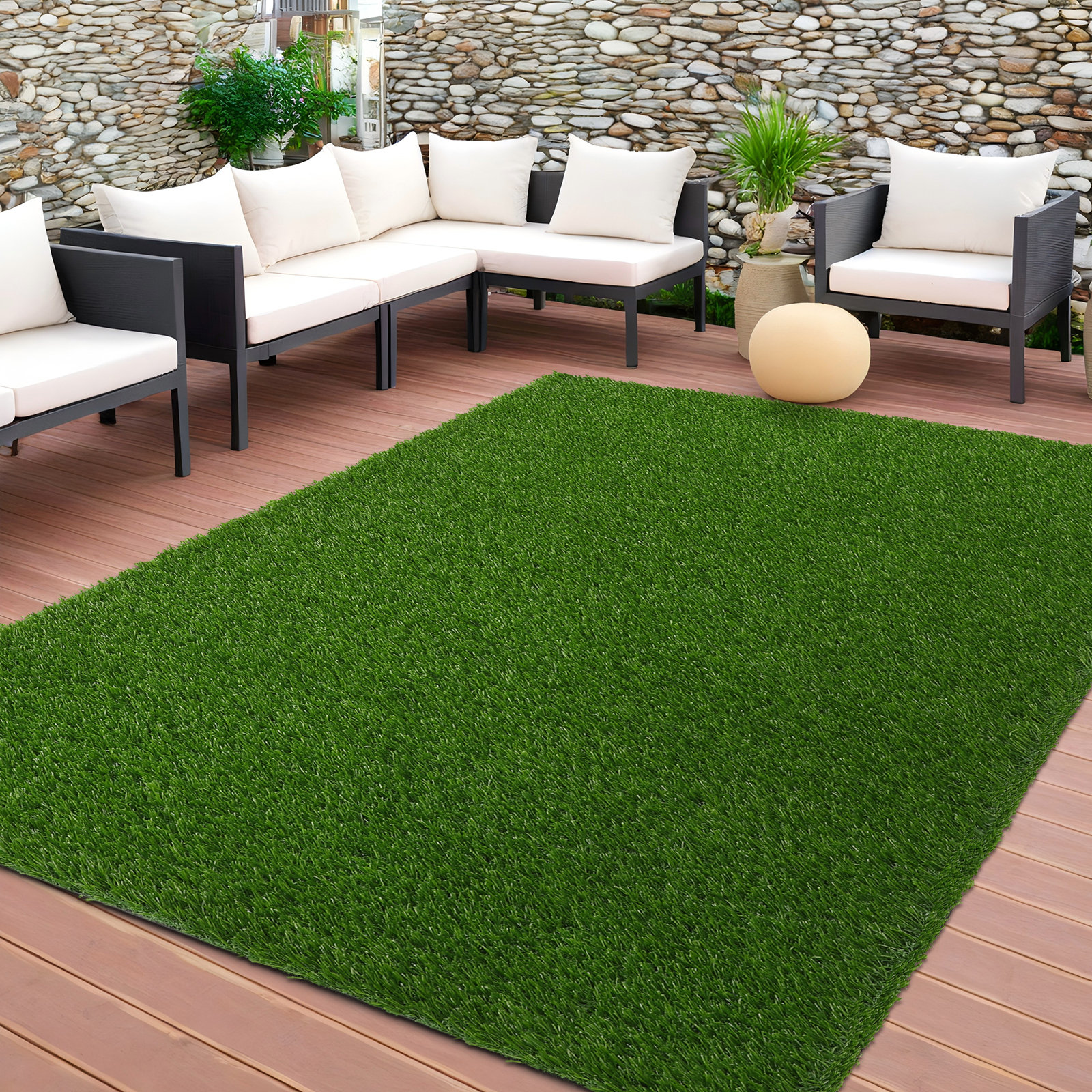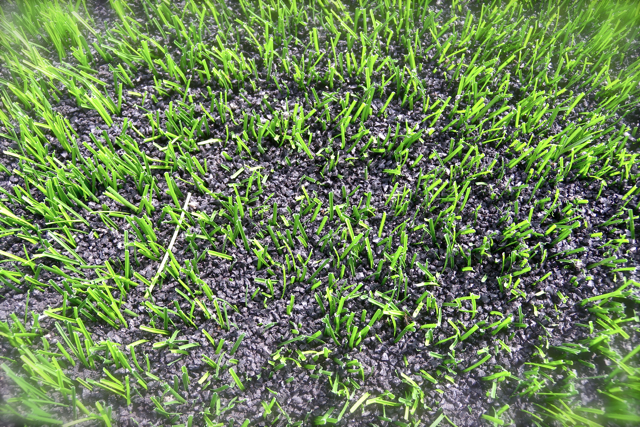Best Phoenix Turf Companies Providing High-Quality Synthetic Grass Solutions
Best Phoenix Turf Companies Providing High-Quality Synthetic Grass Solutions
Blog Article
Explore the Environmental Conveniences of Opting for Artificial Grass Solutions
The fostering of fabricated turf services offers an engaging possibility to deal with pushing environmental difficulties. By substantially reducing water use and decreasing the application of harmful chemicals, these alternatives not only advertise lasting landscaping however likewise safeguard regional ecosystems. Furthermore, the reduced carbon impact related to decreased upkeep activities adds to a much more sustainable strategy to land monitoring. The ramifications of these advantages prolong beyond plain conservation initiatives, raising concerns regarding their long-lasting effect on habitat conservation and total environmental equilibrium. Checking out these measurements reveals a complicated interplay worth considering.
Water Conservation Advantages
One of one of the most significant benefits of synthetic grass is its capacity to conserve water. Conventional lawn lawns call for significant irrigation, particularly in areas vulnerable to drought or water restrictions. On the other hand, artificial turf does not require watering, considerably decreasing the total demand for water sources. This attribute is especially useful in dry regions where water scarcity is a pressing issue.
By getting rid of the need for routine watering, synthetic grass adds to lasting landscape practices and aids mitigate the environmental influence of too much water intake. The conservation of water expands to the reduction of runoff, which can lead to soil erosion and river air pollution.
Additionally, the setup of fabricated turf enables house owners and communities to assign water resources much more efficiently, concentrating on vital uses such as alcohol consumption water and agriculture. The shift towards synthetic grass not just advertises liable water use yet additionally straightens with more comprehensive ecological objectives intended at maintaining all-natural resources.
As neighborhoods significantly prioritize sustainability, the water conservation advantages of synthetic grass provide a compelling situation for its fostering in commercial and domestic landscaping tasks.
Reduced Chemical Usage
The shift to synthetic lawn substantially reduces the reliance on chemical therapies typically used in all-natural lawn maintenance. Traditional turf administration typically entails the application of pesticides, plant foods, and herbicides to advertise growth and control parasites. These chemicals can present dangers to human health, regional wildlife, and the setting, adding to soil and water contamination.
In comparison, synthetic grass removes the demand for these harmful materials. When mounted, it needs minimal maintenance, primarily being composed of regular cleaning and occasional infill replenishment. This decrease in chemical use not only benefits the prompt environment yet additionally adds to wider eco-friendly stability. By minimizing the release of synthetic substances right into the environment, artificial grass advertises much healthier soil and water systems.
In addition, the lack of chemical runoff related to fabricated lawn installments helps secure regional rivers from contamination, sustaining water life and preserving biodiversity. Arizona turf. As communities increasingly prioritize lasting practices, opting for synthetic grass presents a practical service that aligns with environmental conservation objectives. Via this change, home proprietors can take pleasure in lush green areas without endangering environmental health and wellness, leading the way for a more lasting future
Reduced Carbon Footprint

In addition, the installation of man-made lawn can lead to substantial water preservation. Natural grass call for significant quantities of water for irrigation, which not just contributes to the carbon impact connected with water extraction and therapy but also stress neighborhood water resources. On the other hand, synthetic grass requires marginal maintenance, needing no watering, consequently significantly minimizing water use and its associated energy costs.
Furthermore, the long life of synthetic grass adds to its decreased carbon influence. With a lifespan of up to 15 years or more, the demand for frequent replacements is decreased, leading to less waste and lower energy usage in manufacturing and throwing away traditional turf options. In general, synthetic grass offers a lasting choice for ecologically mindful landscaping.
Environment Conservation
Habitat conservation is a crucial factor to consider in the debate over landscaping options, specifically when contrasting fabricated grass to all-natural turf. Natural lawn yards usually need substantial maintenance, including using herbicides, chemicals, and fertilizers, which can detrimentally affect local ecological communities. These chemicals can leach right into the soil and waterways, damaging native plants and fauna and disrupting regional habitats.
Synthetic grass eliminates the need for damaging chemicals, consequently safeguarding neighboring wild animals and keeping the honesty of bordering ecosystems. The installation of man-made grass can lead to the conversion click for info of previous turf locations into even more biodiverse landscapes, such as pollinator gardens or native plant locations, which can sustain neighborhood wild animals.
Ultimately, the shift to synthetic grass not just saves water and minimizes upkeep efforts but also cultivates an extra harmonious relationship in between human tasks and the all-natural atmosphere, promoting environment conservation in the process.
Long-Term Sustainability
Long-lasting sustainability is a critical consider examining the advantages of synthetic grass over traditional yard yards. One of the most substantial benefits of synthetic grass is its resilience; it can last approximately 15-20 years with very little upkeep, whereas natural grass needs frequent reseeding and substitute. This durability reduces the requirement for constant sources, such as water, plant foods, and chemicals, which are crucial for preserving a healthy and balanced turf lawn.
In addition, synthetic grass adds to a decrease in carbon discharges connected with yard treatment equipment. Typical yards often call for gas-powered mowers, trimmers, and blowers, every one of which add to air pollution. Arizona turf. In comparison, synthetic grass removes the need for such devices, advertising a cleaner environment
Furthermore, the manufacturing of synthetic grass significantly utilizes recycled materials, improving its sustainability account. As manufacturers adopt eco-friendly practices, the environmental impact of synthetic grass continues to reduce.

Conclusion
The fostering of synthetic grass solutions offers considerable environmental advantages, consisting of significant water conservation, minimized dependence on dangerous chemicals, and a lower carbon footprint. Additionally, synthetic grass help in protecting natural environments by reducing land disruption and advertising lasting sustainability through using long lasting products. Collectively, these variables emphasize the possibility of synthetic turf to contribute positively to environmental health and provide a feasible alternative to standard landscape design techniques in a significantly resource-conscious world.
In comparison, fabricated lawn does not require watering, substantially decreasing the general check this need for water sources. By decreasing the release of artificial substances right into the environment, man-made turf advertises much healthier dirt and water systems.
Moreover, the installment of fabricated turf can result in significant water preservation. In contrast, synthetic grass needs minimal maintenance, requiring no watering, consequently dramatically reducing water use and its associated energy prices.

Report this page